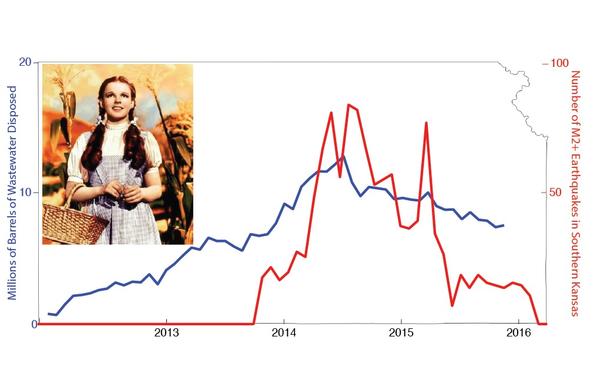Date:
Location:
"The 2012-Present Induced Earthquake Sequence in Southern Kansas" by Justin Rubinstein (USGS Menlo Park)

The appearance of seismicity concurrent with the expansion of oil and gas activities in southern Kansas since September 2012 suggests that industrial operations are inducing earthquakes there. Much of the seismicity can be related to high-rate injection wells within 5 km of the earthquakes. Hydraulic fracturing does not appear to be connected to these earthquakes. There is significant complexity to the situation, though. Some of the seismicity, including the largest earthquake to occur in the area, the M4.8 Milan earthquake, lies at least 10km from high-rate injection wells. Additionally, the presence of high-rate wells does not guarantee that there will be nearby seismicity. Many of the highest-rate injection wells are located to the southwest of our study area, where there is minimal seismicity.
In March 2015 the state of Kansas enacted new limits on the rate of wastewater disposal in five areas in southern Kansas. Overall, the earthquake rate has decreased significantly since these rules went into place. In more detail, however, earthquake rates within the five areas decreased, but the rate outside the five zones increased. Additionally, there is evidence that injection increased outside of these areas. It is likely that fluid-pressure diffusion is responsible for the migration of seismicity outside the areas of reduced injection because there is little injection in the areas unaffected by the new injection rules. This increase is also a reminder that seismicity can persist long after the reduction or cessation of injection. In addition to the effect of the new injection rules, it is probable that the reduction in injection was partially caused by economic factors that have resulted in a decrease in the production of oil and gas. In fact, injection in the area began to drop starting in January 2015, three months before the rules began to be phased in. We have yet to disentangle the effects of the new injection rules and the low prices of oil and gas on the induced seismicity in southern Kansas. [Background reading]